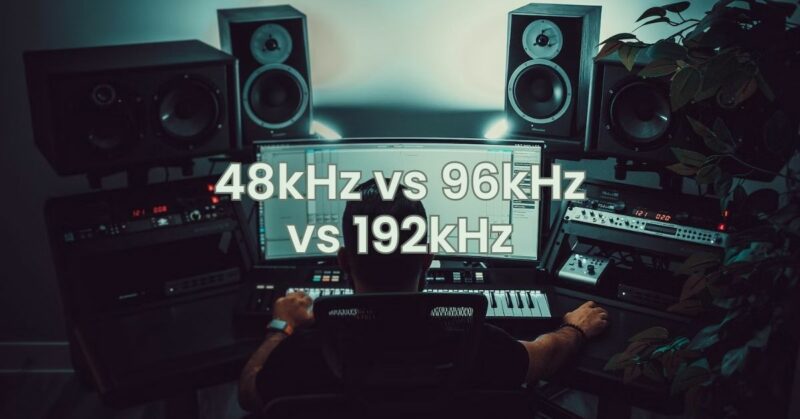The sampling rate is one of the most important factors that determines the sound quality of digital audio. It is the number of times per second that the audio signal is sampled. The higher the sampling rate, the more accurate the representation of the original analog signal.
The three most common sampling rates for digital audio are 48kHz, 96kHz, and 192kHz. 48kHz is the standard sampling rate for DVDs and Blu-rays, while 96kHz and 192kHz are often used for high-resolution audio.
So, which sampling rate is best? In theory, the higher the sampling rate, the better the sound quality. However, in practice, the difference between 48kHz, 96kHz, and 192kHz is often difficult to hear, even with high-quality audio equipment. This is because the human ear is not very sensitive to small differences in sound quality.
There are a few factors that can affect the perceived difference between different sampling rates. One factor is the quality of the audio equipment that you are using. If you are using high-quality equipment, you may be able to hear a difference between the different sampling rates. Another factor is the type of music that you are listening to. Some types of music, such as classical music, may be more revealing of the differences between the different sampling rates.
Ultimately, the decision of which sampling rate to use is a personal one. If you are an audiophile and you are looking for the best possible sound quality, then you may want to consider using 96kHz or 192kHz audio. However, if you are not an audiophile and you are not sure if you can hear the difference between the different sampling rates, then you may want to save your money and use 48kHz audio.
Here is a table that summarizes the differences between 48kHz, 96kHz, and 192kHz:
| Feature | 48kHz | 96kHz | 192kHz |
|---|---|---|---|
| Sampling rate | 48,000 samples per second | 96,000 samples per second | 192,000 samples per second |
| Theoretical frequency response | 20Hz – 24kHz | 20Hz – 48kHz | 20Hz – 96kHz |
| Perceived difference | Often difficult to hear | May be audible with high-quality equipment and certain types of music | May be audible with very high-quality equipment and certain types of music |
I hope this article was helpful. Let me know if you have any other questions.


